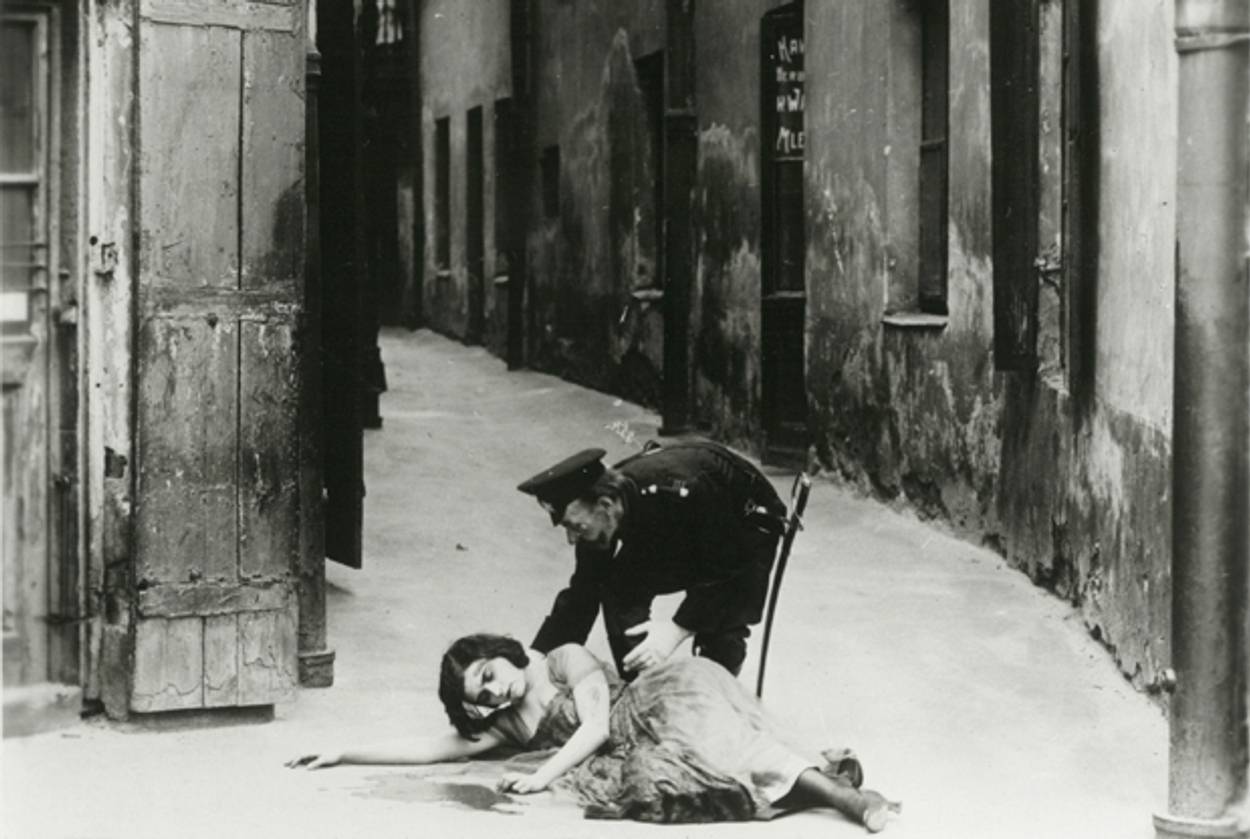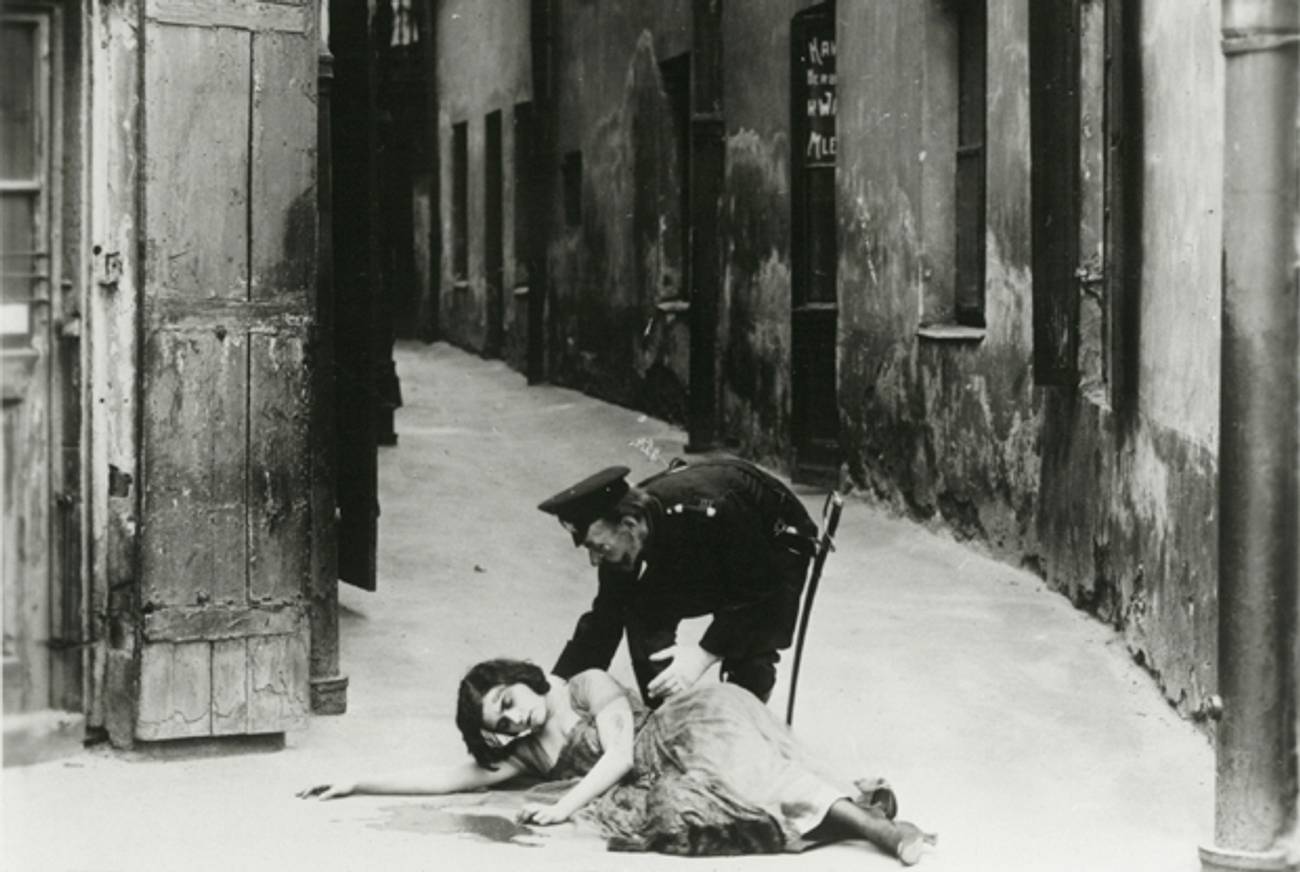Gems From New York’s Film Fest
A live-score screening of the Yiddish classic The Yellow Ticket helps launch the city’s Jewish cinema celebration




Now in its 22nd year, the New York Jewish Film Festival has a long-standing interest in archival material. Two documentaries, Cabaret Berlin: The Wild Scene, and Argentine filmmaker Gaston Solnicki’s Papirosen, titled for the well-known Yiddish ballad (both showing on Jan. 21 and 22), are respectively predicated on Weimar performance footage and four generations of family home movies. Other programs include a newly restored print of the 1939 American Yiddish talkie Kol Nidre(Jan. 13), a crude but compelling melodrama, significant for featuring the stars of the 1937 Dybbuk; a sampling of the short films made by Polish avant-gardists Franciszka and Stefan Themerson in the 1930s (Jan. 20); and a screening of Edgar G. Ulmer’s 1934 Karloff-Lugosi vehicle The Black Cat (Jan. 17). The latter inclusion was prompted by the piece on Jewish horror films that appeared last summer in Tablet; as the author of said article, I’ll be introducing the screening.
One of the early rarities is The Yellow Ticket, the 95-year-old movie that screened last night. It’s a complicated artifact—a Yiddish play adapted by a German film company starring Poland’s first indigenous, and soon to be international, movie star Pola Negri—presented with a new score performed live by violinist and original Klezmatic Alicia Svigals and pianist Marilyn Lerner.
Conflating a number of fraught topical issues—Russian despotism, Jewish immigration, and what was then coyly known as the “white slave” trade—The Yellow Ticket concerns a young Jewish woman who must register as a prostitute, and thus obtain the scarlet “yellow ticket,” in order to attend university outside the Pale of Settlement. It’s a story that, shortly before World War I, materialized in several versions almost simultaneously in New York, Russia, and German-occupied Warsaw.
Lower East Side attorney Abraham Schomer’s melodrama Afn Yam un ‘Ellis Island’ (At Sea and Ellis Island) had its premiere in 1911 at Yiddish diva Keni Liptzin’s Bowery theater with Liptzin in the role of the persecuted student. The same year, Ida Kaminska appeared in a movie, long since lost, variously called The Tragedy of a Russian Student and Vu iz Emes? (Where Is Truth?), apparently produced in Riga and exhibited with “live” spoken Yiddish dialogue. The Russian journalist Alexandr Amfiteatrov published a novel called The Yellow Pass in 1913, and the following year British playwright Michael Morton staged an unauthorized English-language version of Schomer’s play, retitled The Yellow Ticket, on Broadway, with John Barrymore as the visiting American journalist who saves the heroine from disgrace; the great Jacob Adler retaliated by reviving the Yiddish original, rebranded The Yellow Passport, at his downtown theater. (Mutual lawsuits seem to have come to naught.)
The Morton play was novelized, and an American movie version was released in May 1918, around the same time that the German film was made. Barely out of her teens, Negri played a Jewish girl who uses the yellow card to leave the Pale for medical school in St. Petersburg. Studying by day, working (or rather avoiding work) in a brothel by night, she suffers the exposure of her double life and is driven to attempt suicide, ultimately rescued by a surgeon who turns out to be her long-lost father. The story isn’t much, but the movie has two great attractions—its captivating, kohl-eyed star and the several early sequences shot on location in Warsaw’s then-teeming Jewish district, the Nalewki. These sequences are likely the first time that the Nalewki was captured on film; many of the locals seemed amazed and fascinated to see at the camera in their midst.
For Negri who, according to her memoirs, was the daughter of an impoverished Polish noblewoman and a penniless Slovak tinsmith, exiled to Siberia for his revolutionary activities, the Nalewki was a revelation: “I had never been in that strange city within a city, and its alien ways were enthralling. The bearded and bewigged population could easily have stepped out of drawings of life made there two hundred years ago.” The project, which was intended by its German producers to make an anti-Russian statement, had political significance as well: “We were all inspired in making The Yellow Passport. Its sympathetic portrait of Jews might displease some of the population but a vast majority would be very moved by it. It might even help to spread a little tolerance and understanding.”
Negri further reports that, some 15 years later at a party in Berlin, Nazi official Hermann Goering snidely complimented her “convincing” performance in the movie and that she was afterward banned from the German screen until Hitler himself intervened on her behalf. Her story is all the more curious in that she did not return to Germany from Hollywood until two years after the Nazi seizure of power (and was likely invited back) and that, as The Yellow Passport makes clear almost immediately, unbeknownst to her character, she is a foundling adopted by a Jewish couple—hence her persecution is all the more irrational.
Melodramatic contrivances notwithstanding, Svigal’s restrained, klez- and Bartok-inflected score, is sensibly pitched against the movie’s broad acting and creaky plot; the combination of violin and piano would hardly have been unusual in 1918. That said, the film screening was not all that it could have been. The Yellow Ticket, which was restored by legendary film historian Kevin Brownlow in the late 1980s using material from the Dutch Film Archives, was projected from an American Blu-Ray, a somewhat muddy transfer that, made at 24 frames per second rather than 18, speeded up the action and effectively shortened the movie’s running time by 12 minutes. Still, in the tradeoff between print quality and live music, the packed house last night seemed more than satisfied with the latter.
***
Like this article? Sign up for our Daily Digest to get Tablet Magazine’s new content in your inbox each morning.
J. Hoberman, the former longtime Village Voice film critic, is a monthly film columnist for Tablet Magazine. He is the author, co-author or editor of 12 books, including Bridge of Light: Yiddish Film Between Two Worlds and, with Jeffrey Shandler, Entertaining America: Jews, Movies, and Broadcasting.
J. Hoberman was the longtime Village Voice film critic. He is the author, co-author, or editor of 12 books, including Bridge of Light: Yiddish Film Between Two Worlds and, with Jeffrey Shandler, Entertaining America: Jews, Movies, and Broadcasting.